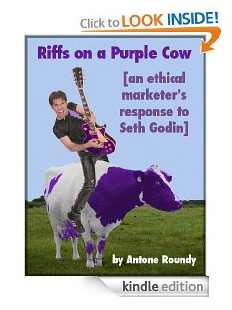When you purchase through links on our site, we may earn an affiliate commission (details)
So I Sold to an Axe Murderer
If you've ever written a sales letter, you've felt it on the back of you neck. The hot breath of a disgruntled prospect, ready to let the axe fall at the slightest flaw in your pitch.
You've written, rewritten, edited and tweaked, and finally published. And in the end, just like in the horror movies, 98% of the visitors to your site "did the deed".
Fortunately, they used the "back" buttons on their browsers rather than deadly weapons.
But the fact remains that as far as sales go, most of your site's visitors may as well be axe murderers, right?
Maybe not. At Copyblogger last week, Robert Bruce shared a different perspective:
Years later, after my time in Hollywood was over, I was sitting next to a very old man at a bus stop. We chatted for a few minutes, turns out he'd been an extremely successful businessman in the midwest.
I told him my experiences, my many failures in work, and he listened patiently.
Then he uttered something that changed the way I looked at work, success, failure, and everything else related to human industry "” forever.
"You know, those casting directors really wanted you to be the one they were looking for. They weren't against you, they were waiting for you to nail it, so they could pack up and get back to their martinis."
That's right. All those axe murderers who leave your site without buying really hoped you'd be their hero. They hoped your product would be the one to slay their dragons.
So what happened? Why didn't they buy?
There are a number or possible explanations:
- They didn't believe you could slay the dragon.
- They wanted someone to slay a different dragon.
- They were shopping around for heroes in case the dragon shows up, but they're not convinced he's coming yet.
- They'd rather get eaten than pay what you're asking.
- etc.
The point is that the job of your sales letter isn't to turn an axe murderer into a buyer -- it's to show that your product is the hero the customer hopes it'll be.
"Can You Slay This Dragon?"
When someone arrives at your site, what's the first question in their mind? "Am I at the right place?" They need to know that they're on a page that talks about a solution to their problem. The first words and images they see should address that question.
Some visitors will be looking for solutions to related problems. If you're not slaying the dragon that's standing in front of them, many will leave. But if you can quickly get them to realize that the dragon's brother (one that your product slays) is standing behind them, you may make the sale anyway.
To do that, you either need to instantly show them the other problem, or captivate them long enough to introduce it to them convincingly.
"Can You Slay Any Dragon?"
The way you present your pitch needs to support your credibility. If your site looks like it was built by a stray dog, they may believe that your product tries to solve their problem, but they'll be less likely to believe that it can succeed.
Likewise, if you use the wrong lingo (like calling a golf club a "ball hitting stick" -- not sure where I read that example recently), they won't believe that you know what you're talking about.
"What's the Rush?", "What If You Fail?", etc.
Other parts of your sales letter address questions like why they should buy now (if they dragon's still a ways off), what kind of guarantee you offer, etc.
The customer wants to believe you've got their solution -- otherwise they'd never have come to your site. It's not an adversarial relationship.
But they also have doubts -- they don't know when they arrive whether your their hero or another villain.
If you address and destroy their doubts, you get the sale. If not, you get the axe.




